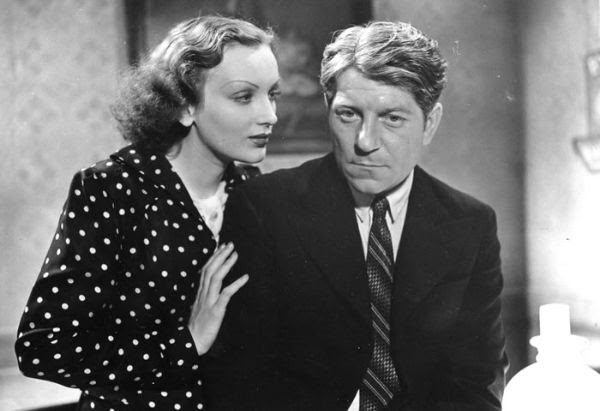The profile of French director Jean Grémillon has received a boost lately. When one thinks of prolific French directors of the 1930s, other names probably come to mind first, like Jean Renoir or Marcel Carné. Recently, 4K digital restorations of two of his films have premiered at European festivals, and will have their U.S. theatrical premieres this week at New York’s Metrograph Theater.
Both are elegant, oozing with atmosphere and feature major stars of the day. The crowd-pleaser is arguably The Strange Mister Victor (1938), a showcase for one of the great French stars of the 1930s, Raimu, in the title role. His Victor is alternately jovial, regal, and coarsely menacing as a bourgeois proprietor of a general goods store. If it seems as though Victor is performing for onlookers as he strolls down the avenue, with his head held high, his chest up, and his hands folded behind his back, well, he is. After store hours, he is also a fence for a gang of jewel thieves. (Like American movies from the ‘30s, jewel thieves were apparently plentiful.) He’s also a doting father of a son and an attentive husband for his much younger wife.
However, when an innocent working-class cobbler takes the fall for a murder Victor commits, the audience becomes complicit in Victor’s many crimes (he’s empathetic, to a point) and also on the edge of their seat, waiting for his comeuppance. Meanwhile, his wife and child unwittingly become involved in the coverup. The cobbler (the quietly magnetic Pierre Blanchar) ends up in a French Guyanese penal colony, while his wife, played by a sultry Viviane Romance, raises their impudent son and finds a thug as a new beau. Grémillon directs his cast with a sure hand. The actors never succumb to melodramatic histrionics of the era, and each has a moment to stand out, including the children.
Speaking of Carné, that director centered two films on the sardonic everyman, working-class stiff Jean Gabin: the gritty Port of Shadows (1938) and Le Jour Se Leve (1939). In a change of pace from these more famous roles, Gabin takes on a persona in Grémillon’s Lady Killer (1937) that was Maurice Chevalier’s calling card earlier in the decade: the charming, effortless seducer, cock of the walk soldier. When Lucien arrives in the southern town of Orange, women run out into the streets or shout from their windows, vying for his attention.
However, the breezy lover boy turns into an obsessive pursuer seeking an elusive conquest: the methodical and transactional dame about town, Madeleine (Marielle Balin), who runs off with his 10,000 francs and—among the predictable developments—his heart. (Balin had a divergent trajectory from her co-star Gabin during and after the Second World War.) Double-crossed and dejected, Lucien loses his esprit libre and, just as in his films with Carné, the storyline takes a noirish turn. The tone contrasts with Hollywood romantic dramas of the time: This stud most definitely stays in madame’s Paris apartment overnight, and Gabin utters at least one slight profanity.
This movie and The Strange Mister Victor have gratifying twists as their plots zigzag toward the end. It’s not until the last few minutes that the true love story within Lady Killer comes out, so to speak. The two luminous black-and-white star vehicles were shot on location, taking viewers back to late-1930s Orange, Cannes, and Mr. Victor’s Toulon, which looks unrecognizable from today’s postwar development.

















Leave A Comment